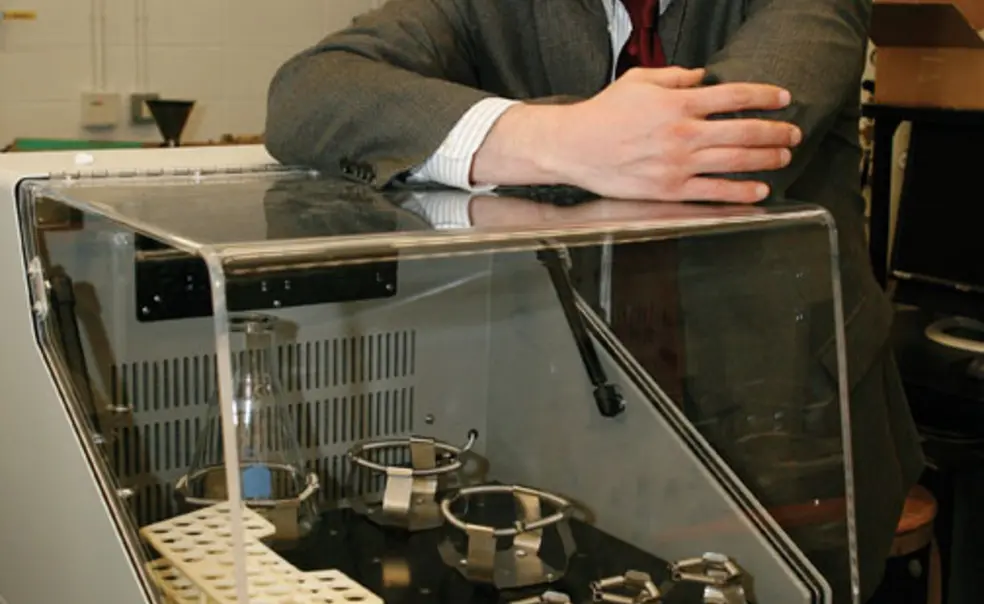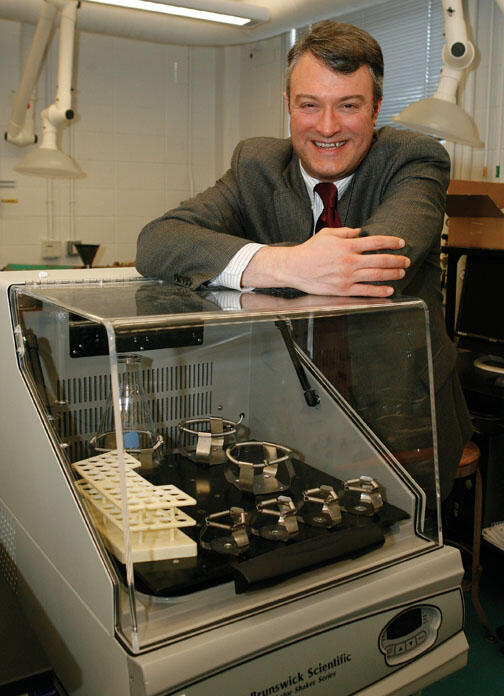Formalizing the chemical-biological engineering link
On the lower level of the E-Quad’s A wing, in a recently renovated space that hosts the junior-year lab course for chemical engineering majors, department chairman Richard Register highlighted a pair of experiments that exemplify the current state of his field: to his right, a distillation column, a familiar sight for generations of chemical engineers; and to his left, an incubator for growing bacteria, a must-have for some of the biological-engineering work that has become increasingly important in the last two decades. Chemical and biological, side by side.
Beginning in July, those two words also will be side by side in the name of the department, a change that Register said “reflects both where we are and where we think we’re going.”
In research and teaching, biological engineering has seen steady growth at Princeton, and its potential applications in health and energy are in sync with two priority areas for the School of Engineering and Applied Science (SEAS). But before the name change was approved in December, there was no “bio” on the SEAS masthead.
Register said that administrators considered a new department of biological engineering, but concluded that keeping biological and chemical engineering together made more sense.
Of chemical engineering’s 16 faculty members, five perform research rooted in biology, including Robert Prud’homme, who is developing nanoparticles for medical applications; Christodoulos Floudas, who studies protein design; Stas Shvartsman, an expert in modeling and cell signaling who holds a joint appointment with the Lewis-Sigler Institute for Innovative Genomics; and two assistant professors who joined the department in 2007, Jamie Link ’00 and Celeste Nelson. Link produces novel proteins, and Nelson applies engineering to tissue development.
“Our recent hiring is tilted heavily to the area of bioengineering, because that is where we’re finding some of the most talented candidates and the most exciting proposed research,” Register said. The department plans to add another faculty member this year.
Link, who developed his interest in protein engineering as a Ph.D. student at Caltech, said that Princeton undergraduates consistently show a strong interest in bioengineering, even in upper-level courses that are open to both graduate students and undergraduates.
There are 103 chemical engineering majors, and all are required to take molecular biology. Students have shown an appetite for bioengineering electives as well. Of the six curricular tracks that majors can follow, the bioengineering and biotechnology track is the most popular. The certificate program in engineering biology, started by Prud’homme, also has seen a growing enrollment.













No responses yet